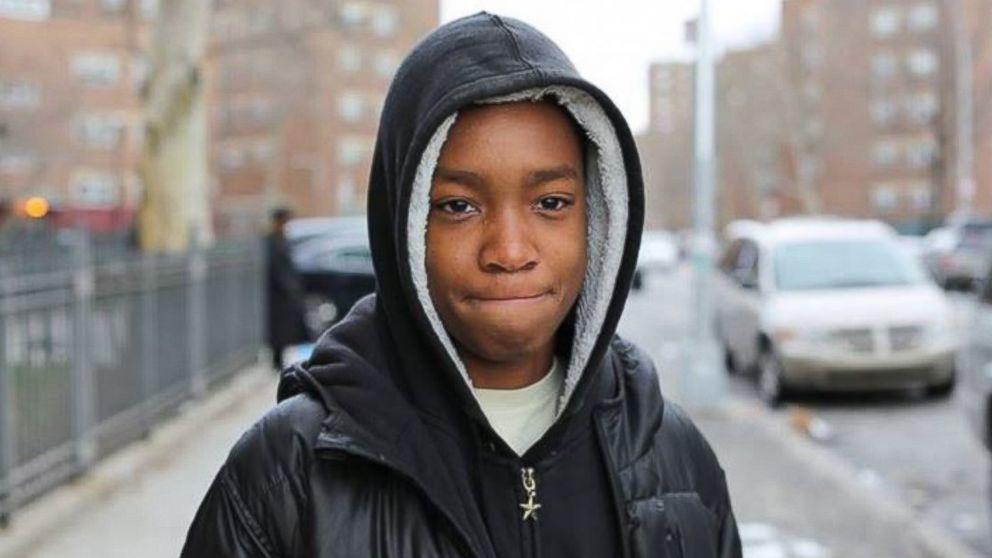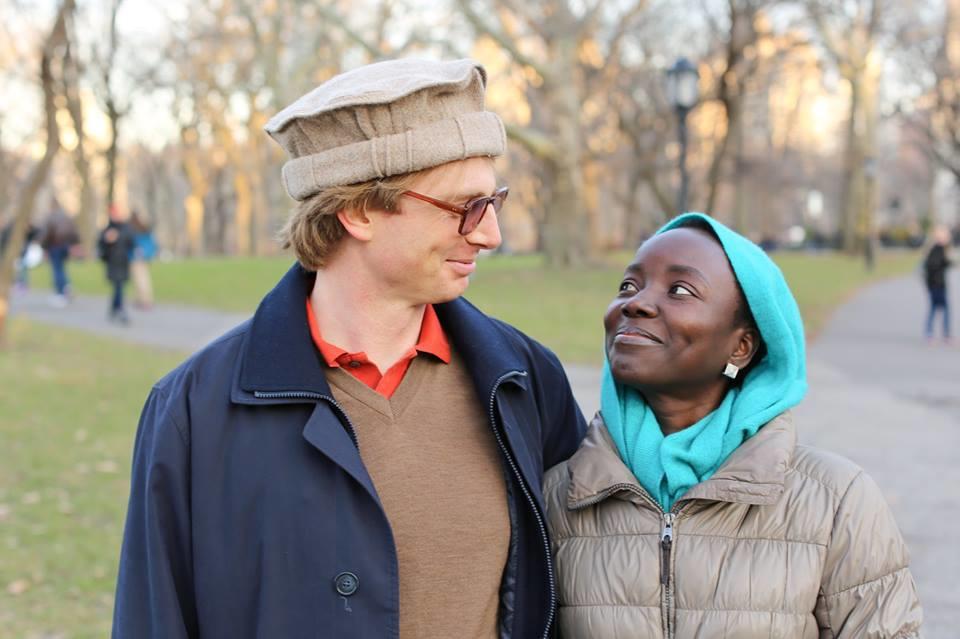Introduction
Humans of New York has shown to be one of the most thought-provoking projects of recent years. Brandon Stanton presented the public with the collection of photographs depicting New Yorkers telling their elaborate stories. In this way, the photographer captured the spirit of the city that is often called a melting pot of cultures. Because the project included people from different backgrounds, ages, sets of values, and points of view, it was not too difficult to see which images may convey something more than just a life story or a short anecdote. Among the Humans of New York, there were people whose images conveyed the message of the desire to be accepted in the society, be valued and supported. The project tried to elevate the meaning of many pictures and force the viewer/reader to look beyond the visual identities of people and to explore the stigma that may surround them.
Vidal
One of the first images that attracted attention was the photograph of a boy wearing a hoodie. Undoubtedly, it is one of the most famous photographs from the series because of the fascinating story the boy (Vidal) told Stanton as well as the events that followed the publication of his photo on social media and later in print form. Upon looking at the images (Figure 1), it is becoming quite clear why the photographer choose to take a photo of Vidal:

The boy in the image can be regarded as a classic representation of a person that too many people in our society associate with “thugs” and “lowlives,” and race plays a large role in contributing to this perception. So many of us can imagine the boy entering a New York bodega to buy some Coke and being met with a suspicion of the shop’s work that would watch the boy carefully to make sure that nothing is stolen. The thoughts of the boy being great at mathematics at school or playing the violin may rarely cross the minds of the spectators since the bulk of the views and opinions of a person can be formed on the basis of looks. Unfortunately, the stigma of being just a “black kid” in a hoodie can make a tremendous change in how an individual is perceived by society. In the case of Vidal, social stigma is something that he may have to encounter is many years to come; he is the one who may be afraid of being caught up in an argument with the law enforcement as shown by the recent events of police brutality against African American people.
It is evident that the photographer tried to make a connection between the subject of the image and the viewer to challenge the stigma and tell the story that goes beyond one’s appearance and skin color. In this case, Stanton tried to evoke the feeling of a moral-aesthetic double vision that Riis’s photos of children sleeping in the streets once did. While the viewer felt injustice for the children, he or she could not help but to slightly marvel at them sleeping. If one is not to take into consideration anything Vidal told the photographer and disregard any signs of stigma, the viewer is left with an image of a smirking and confident boy with calm occupying the entire photograph. The photo conveys a little more than an image or a stigma; there is something spiritual in the resilience and youth, the phenomenal talent of children, however voiceless or powerless, to survive in a large “melting pot” city (Cunningham).
If anything, the image made tremendous progress towards achieving the much-needed social change and elevating stigma that surrounded people like Vandal. After the publication of the image, there was a big fund-raising campaign to support the boy’s school (that raised $1.4 million). The fact that so many people united their efforts to make a positive contribution to the boy’s life says a lot how the media can help spread the message of acceptance and support for each other, regardless of background and race. As mentioned by Sontag, photography offers viewers some abstract reality that helps them experience the suffering of others at a distance (118). With regard to this, the viewers “felt the pain” experienced by the boy in his life and tried to do something good for him and his future because it matters the same way as the future of a white girl from a private school does.
The Couple
The second image chosen for the exploration of social stigma existing in the society depicts an interracial couple of New Yorkers (Figure 2). According to their story, they met in Afghanistan, which says a lot about their relationships and the possible turns their lives took.

Historically, interracial couples have faced some extreme stigmatization on the part of the society since the associations with violence. The introduction of institutionalized slavery in America changed the nature of the relationships between white men and black women completely due to the countless instances of African-American women being raped by the powerful white slave owners. On the flip side, African-American men in interracial relationships were regarded as likely to brutally murder their white partners, which is a strikingly unfair stereotype (Nittle). Despite the fact that marriage was viewed as a basic civil right, interracial couples had been pressurized by the anti-miscegenation laws that were finally abandoned after the civil rights movement. However, even to this day, when people of different races and cultures get married (African American women marrying white men and vice versa), they risk being stigmatized even by their families, not to mention the pressure from the society.
The photograph of the couple challenges the stigma surrounding interracial relationships by showing that people of many cultures and skin colors can love and value each other. The way in which the man and the woman look into each other’s eyes does not much explanation – they look beyond the stigma associated with their relationship and respect one another for who they are as people rather than how they look. Because looks represent such a significant part of how people form impressions of others, seeing an interracial couple as “not normal” is largely associated with only the external facade that does not take into consideration such notions as love and support.
It is evident that the couple caught Stanton’s attention for its unconventional look, so the photographer wanted to find out more about these people and their stories. The main intention of the photographer was to connect the couple to the viewer by sending the message of love and acceptance for all. Because interracial relationships used to be punished by the law back in the day, it is interesting to see how the dynamics changed and how more and more people became accepting of each other. Nevertheless, the social stigma surrounding couples like the one in the photograph still exits, and in the light of the recent political developments in the country, it may exasperate. Standing against stereotypes and pressure from some members of the society takes a lot of strength and courage, so it was imperative for the photographer to share the story of the couple that is essentially like any other couple out there but is forced to sometimes deal with the lack of acceptance for their choice of partners. The full story about the couple remains unknown to the viewer; however, there is no speculation about the feelings these people have for each other.
Whose Lives Matter?
When discussing the photographs in the context of the Black Lives Matter movement, it is very easy to conclude that all lives are meaningful and should be treated as such. Although, there is a certain level of hyperbole in the key message of the movement in order for the society to acknowledge and recognize the stigma some representatives of the African American community are facing to this day. When stating that “black lives matter,” activists are trying to bring attention to the inequalities that still exist in the society with regards to racial differences, forcing the community to stay alerted and become more open towards recognizing those inequalities.
On the other end of the spectrum, police brutality or the stigma of the African Americans being more prone to crime does have statistical backing, According to the report conducted by the FBI, African-American people are more prone to conduct robberies and murders compared to the representatives of other races, which is an alarming statistic that could be explained by the lack of accommodation and attention to the needs of the community. Reversing the trend can be only possible by challenging the common misconceptions and moving towards the inclusive and accepting society where each member is supported and valued, as was in the example with fundraising for Vandal’s school.
Conclusion
Projects such as Humans of New York may be characterized as humanizing; however, while the viewer sees an image, it is hard to miss the feeling that the photographs were also taken to be looked at from the point of view of art – humans on the photos act as objects that transfer an aesthetic the author wanted to convey. One of the most fascinating aspects of the images is reading the faces on the photos before reading the stories, which contributes to the dehumanization aspect of the project.
The brightness and the diversity of Stanton’s photographs leave spectators no chance than to engage in the stories of the people living in New York. From the boy who witnessed a murder to a couple of people that met on another continent and love each other regardless of race, the stories shed light on what matters the most – acceptance and the recognition of the struggles of others. Yes, black lives matter, and yes, all lives matter, but without a sense of community and the support for each other, there will be no room for growth and improvement for those lives.
Works Cited
Cunningham, Vinson. “Humans of New York and the Cavalier Consumption of Others.” New Yorker. 2015, Web.
FBI. “Arrests by Race and Ethnicity.” Ucr FBI, 2015. Web.
Nittle, Nadra Kareem. “Common Problems Interracial Couples Faced Historically and today.” Thoughtco. 2016, Web.
Sontag, Susan. Regarding the Pain of Others. Picador, 1933.
Stanton, Brandon. We Met in Afghanistan. 2015. Blogspot.
Stanton, Brandon. Vidal. 2015. Humans of New York.